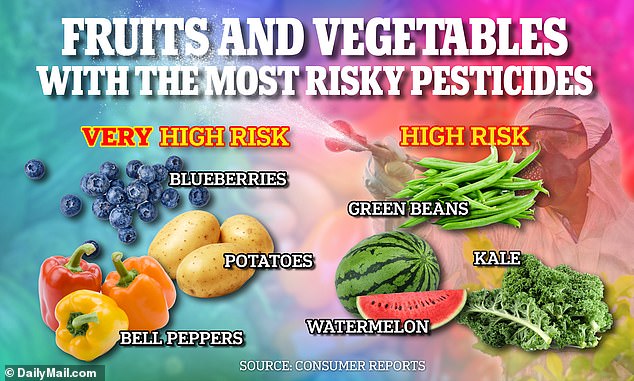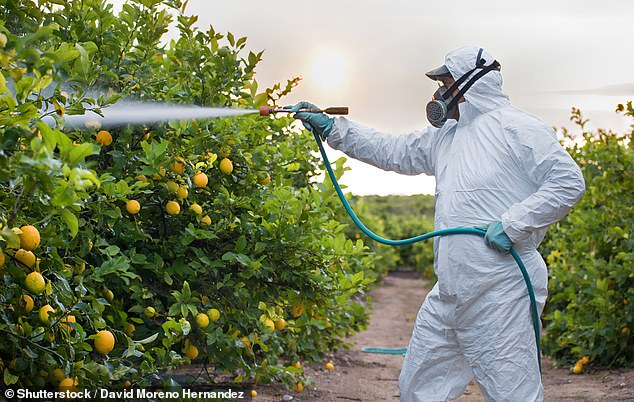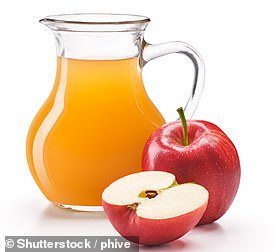Everyone has been told to wash their products, but some experts say it could be useless.
When used extensively in the growing process, pesticides can enter fruits and vegetables.
So washing the outside will help clean off dirt, bugs and bacteria, as well as outside pesticides, but you’ll probably still consume them, Marvin Pritts, professor of horticulture at Cornell University, he told NPR.
“The waste is inside the cells and it is there to stay,” Professor Pritts said.
Pesticides are sprayed on produce to prevent animals from eating them, but it has been linked to adverse health effects.
Defeatists might say this makes washing fruits and vegetables useless. However, this is not strictly true.
First, according to research from Consumer Reports, you can buy foods that are less likely to absorb pesticides, such as avocados, mangoes, and carrots.
Second, you can buy them from companies that use little or no pesticides on their farms; You’re probably safer. However, this requires research and money, and it’s not as simple as buying anything labeled organic at the store, senior environmental toxicologist Alexis Temkin told NPR.
Finally, although it may not cancel out all pesticides, washing and peeling the outside of fruits can help reduce exposure, Professor Pritts said.
This could provide some comfort to the multitudes of online fruit washing influencers, such as TikTok user Kaeli Mae. Mae made a video showing her routine of using baking soda and vinegar to give her fruit a “hospital-grade decontamination.”
This is an understandable reaction since pesticides have historically been linked to thyroid disease, diabetes, and kidney disease. according to the NIH.
More recently, researchers at UCLA have sounded the alarm by connecting these pesticides to an increased risk of developing Parkinson’s in Americans who carry certain genetic mutations.
But is it better to use homemade concoctions, store-bought fruit washes, or just water to remove those pesky chemicals from your products?
Experts say water is good, old fashioned water is the best way to go.
A brief rinse removed nine of the 12 pesticides measured In a 2000 study, and follow-up investigation showed that water was as effective in removing pesticides as using other cleaning agents, such as dish soap.
“Washing fruits and vegetables not only helps remove dirt, bacteria, and stubborn garden pests, but it also helps remove residual pesticides,” say food science and food safety researchers. Colorado State University wrote in collaboration with the USDA.
This is because using other chemicals is not much more effective in cleaning products. Additionally, fruits and vegetables are very absorbent and can pick up any material you washed them with, which could irritate your body.
He The CDC explicitly recommends against the use of soaps, soaps or bleaches for fruits and vegetables.
Government agencies, such as the CDC, USDA, and FDA, have a higher threshold for the number of chemicals they consider safe compared to independent agencies such as Consumer Reports.

Consumer Reports, a nonprofit organization, analyzed seven years of data from the Department of Agriculture
The best way to clean your products starts before you even touch the faucet.
To start, you need to make sure your hands and any surfaces the product comes into contact with are clean, according to CSU researchers.
Additionally, you should wait to wash produce until just before eating it, because washing and then storing it can cause more bacteria to grow on the surface of the fruit.
After preparing the area, you should put the product in room temperature water for 10 to 15 seconds.
If it is a delicate produce, you can use your hands to gently clean the surface while the water runs over it, or if it is a more resistant fruit, you can use a vegetable scrubber.
At this stage, if you want to add baking soda or vinegar, this won’t hurt, according to Consumer Reports.
Some studies have found that soaking vegetables in white vinegar for ten to fifteen minutes will reduce the number of bacteria on the surface of the product.
Others have found that soaking apples in baking soda reduces the amount of pesticides on their surface better than rinsing them with tap water.
But to remove more pesticides from the surface, soak produce for 12 to 15 minutes, consumers report.
Soaking softer produce, such as berries or asparagus, in baking soda for so long can cause the skin to crack, so this method is probably best for harder fruits and vegetables.
In total, the time and effort it takes to introduce these other ingredients can outweigh the small benefits you get from using them, Carissa Galloway, registered dietitian nutritionist, he told CNBC.
The safest way to ensure you’re taking in the least amount of pesticides, Galloway and the FDA recommend, is to buy organic produce.


